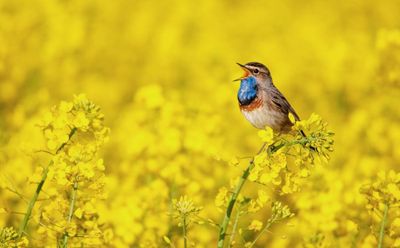How to Draw Songbirds to Your Yard
Whether you live in the suburbs, a rural area, on a farm, or even in the heart of a big city, there are birds in the air and they are looking for great gardens to visit. There are a few musts for any size of garden that wants to maximize these visitors: food, protection, and shelter, and water. Yes, the plants in your garden can provide these things, but you need more. A garden for songbirds requires some planning. In addition to specific plants, find room for some of these other elements:
A bird feeder and seed. It’s crucial to have plants that provide food for songbirds, but a feeder offers extra incentive as well as winter snacking when other food is scarce. Feeding wild birds will attract a number of species. A water source. Birds need water, and if you don’t have it, all the food in the world won’t bring them to the garden. It could be a pond or natural wetlands, a manmade pond, or a simple birdbath. Even an inverted trash can lid with water is enough. It doesn’t have to be fancy. Places to take cover. Plants are the main source of cover for songbirds, and you can choose those that fit your garden. Large deciduous trees, like maples, oaks, and hickories are great for large yards, while holly, blueberry, and other shrubs work in smaller spaces. Just be sure to include some evergreens for year-round cover.
Examples of Plants That Attract Songbirds
Plants songbirds like are the backbone of your bird-friendly garden. They provide cover and food, ideally year round. Go for layers of plants, if you have room, as some birds nest up high, some in the middle canopy, and others closer to the ground. Here are some ideas to get you started:
Juniper. Juniper plants provide excellent, evergreen cover and nesting space, as well as good quality food in the fall and winter for songbirds. Flowering crabapple. These pretty, decorative trees are not too big and they provide cover as well as food from summer through winter. Chokecherry. Good for medium-level cover, the chokecherry shrub also provides food that more than 70 species of bird like to eat. Elderberry. The elderberry shrub/small tree is also popular, with more than 100 species attracted to it for food in the late summer. Flowering vines. Use Virginia creeper, coral honeysuckle, trumpet vine, and other flowering vines for nesting and cover in smaller spaces. As an added bonus, these will attract hummingbirds.
In general, go for a variety of plants, with different heights, deciduous and evergreen, with different kinds of flowers and berries, and you can expect to have a true garden for songbirds.
